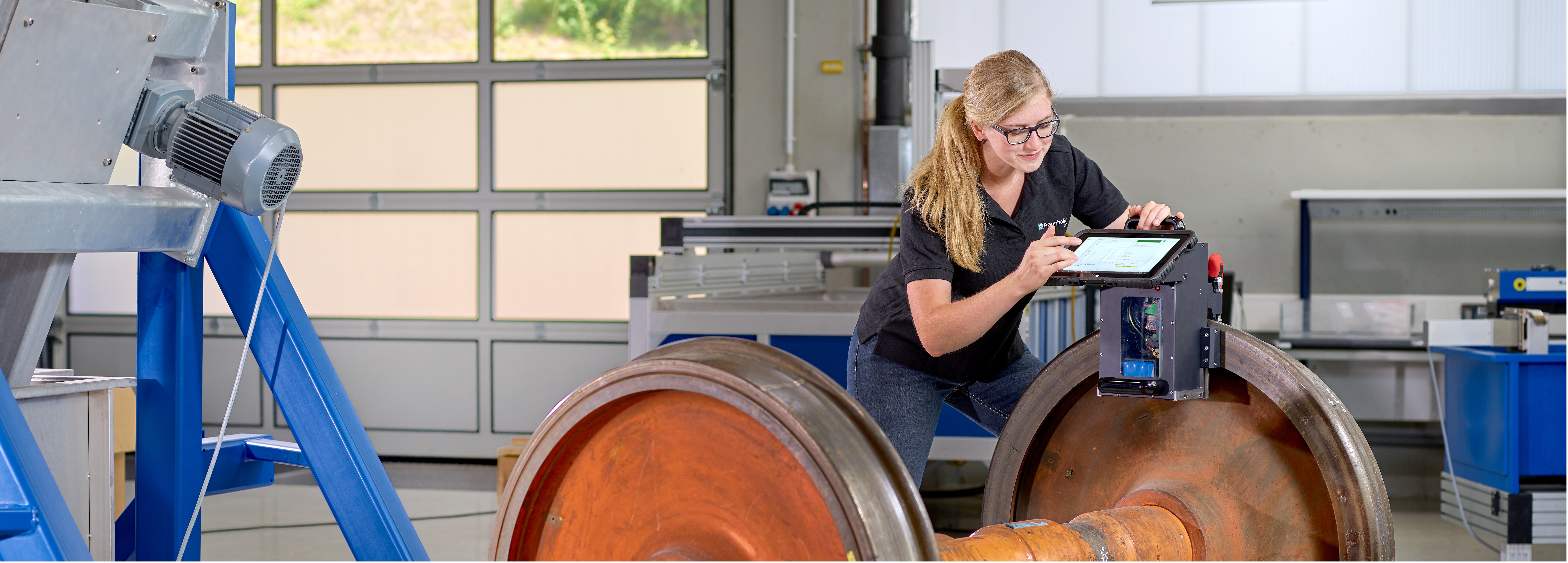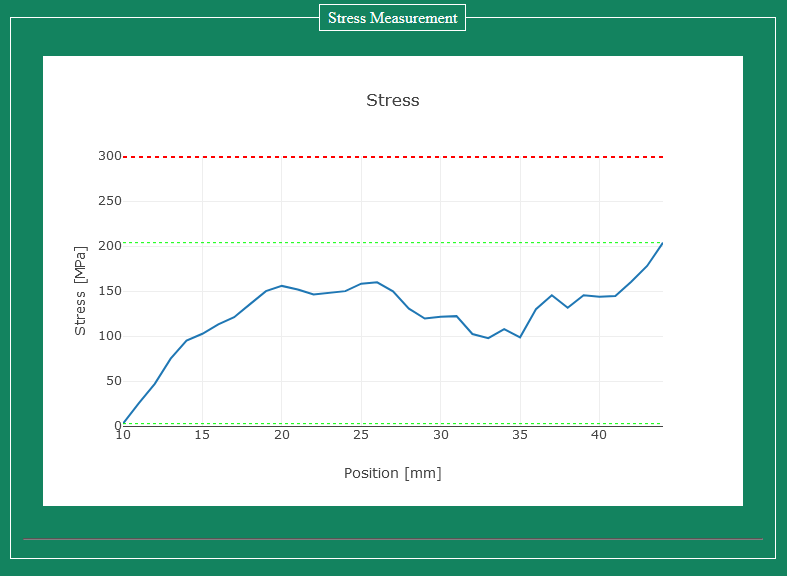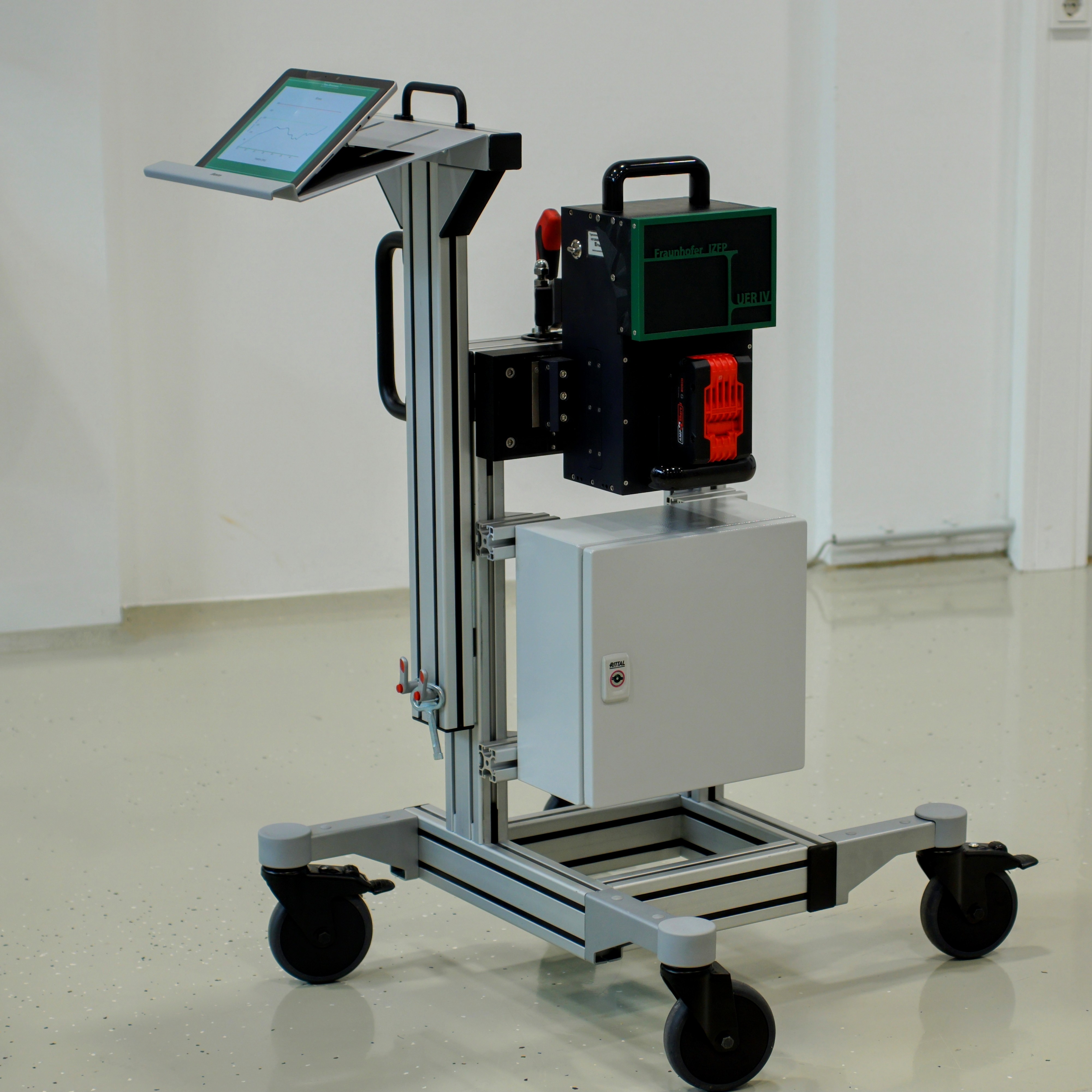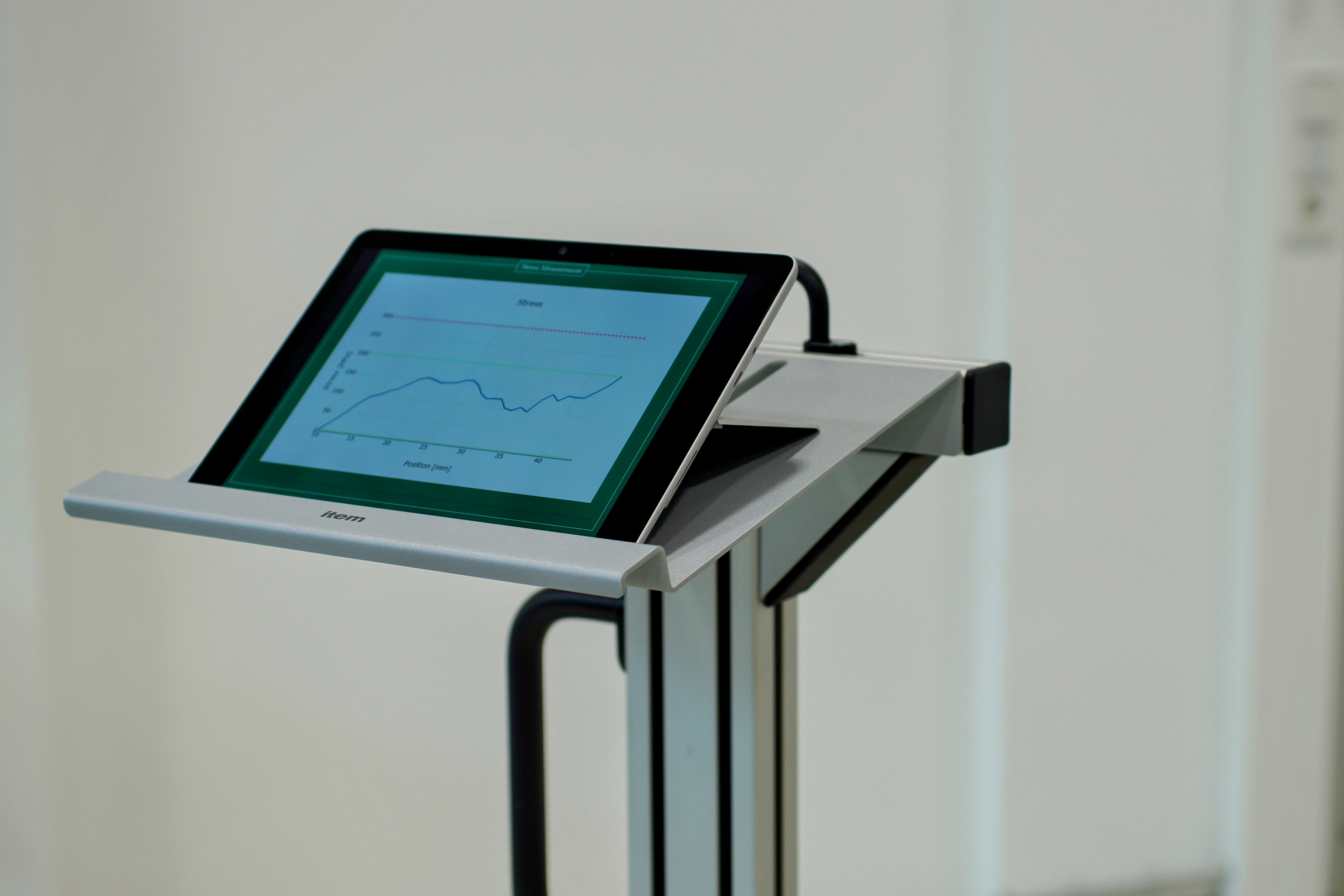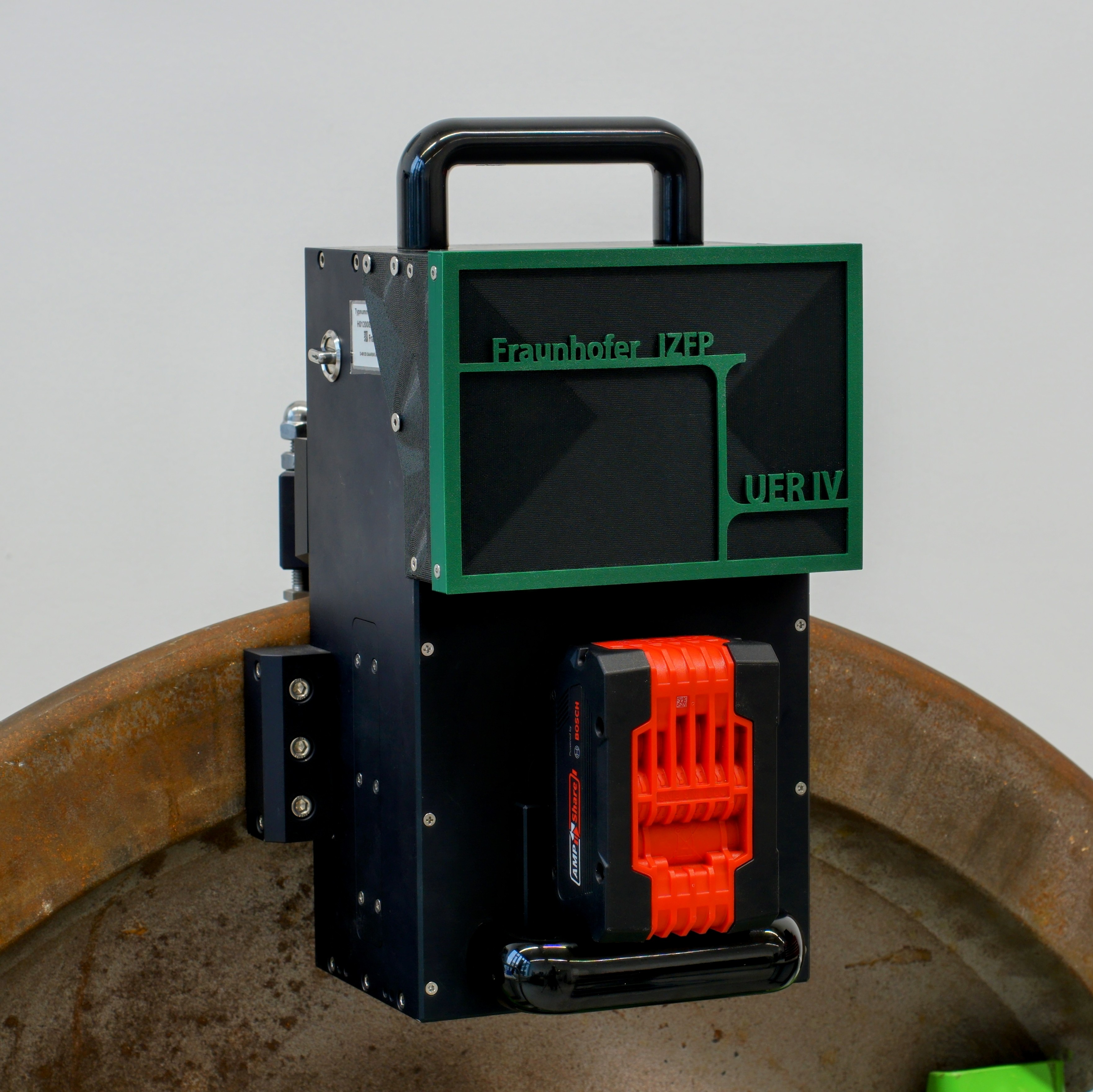The wheels of freight cars with brake blocks are constantly subjected to recurring heating and cooling processes, which vary greatly depending on the braking situation. Under these thermomechanical loads, the residual stress state of the wheel rims changes considerably over their service life. The original compressive residual stress state introduced thermally during production is gradually transformed into a tensile residual stress state acting in the circumferential direction. Small cracks, which are always present in the running surface due to wheel-rail contact, can grow under the influence of sufficiently high tensile residual stresses and ultimately lead to the wheel breaking. For this reason, determining the residual stress state in the wheel rims is of particular importance.
To determine the residual stress state of a freight car wheel, “UER“ uses the so-called acoustoelastic effect. This describes the influence of a given stress state on the propagation speed of ultrasonic waves in solids. The strength of this influence depends directly on the propagation/polarization direction of the ultrasonic wave in relation to the direction of the stress. To measure the residual stress on the freight car wheel, a linearly polarized transverse wave is introduced without a coupling agent from the side of the wheel rim using an electromagnetic ultrasonic transducer (EMAT). During the measurement, the EMAT is moved in millimeter steps in a radial direction along the wheel rim, with two highly precise time-of-flight (TOF) measurements being taken at each position, with the direction of vibration of the shear wave being tangential and perpendicular to the running surface. Since the residual stresses in the radial direction are not significantly influenced by the thermomechanical aging during braking, the residual stresses in the circumferential direction can be determined from the TOF-difference of the two measurements and the material-specific acoustoelastic constant.
Numerous stationary and mobile UER systems from the Fraunhofer IZFP are in daily use in the factories of railway companies, wheel manufacturers and maintenance companies worldwide.
Fields of application
- Heavy maintenance
- Light maintenance
- Wheel production (according to DIN EN 13262)
- Wheel development
UER IV
- Decades of experience in industrial use
- New, more efficient embedded system
- Fully network-independent operation
- Customer-friendly quick-change computer system to maximize availability
- Comprehensive technical support in the field from the Fraunhofer IZFP service team
- Maximum flexibility of connection to the IT infrastructure at the point of use
- Proven convenient and easy to learn operation
Technical features
- Complete integration of the inspection system into the manipulator
- No permanent connection to a PC, laptop or tablet required for operation
- Fraunhofer IZFP's own compact ultrasonic technology
- FPGA-based processing, amplification and filtering
- Couplant-free electromagnetic ultrasonic transducer | ultrasonic transmitter/receiver
- Exchangeable computer unit for uninterrupted inspection operation
- Modern, cross-platform software
- Browser-based application compatible with all common operating systems
- Individual user accounts for test traceability
- Wireless access to the application and documentation
- Cross-manufacturer 18V battery system for completely network-independent operation
Flyer “UER IV” (German)
 Fraunhofer Institute for Nondestructive Testing IZFP
Fraunhofer Institute for Nondestructive Testing IZFP 